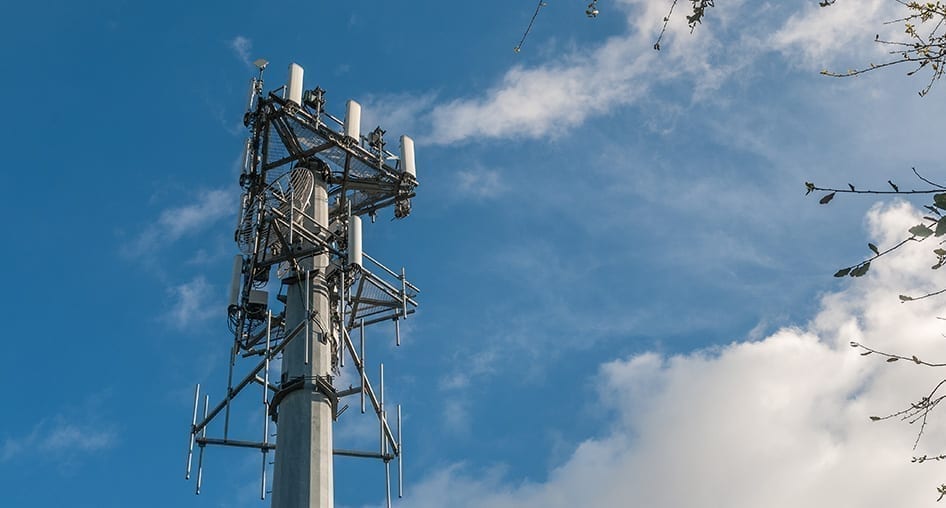4 Antennas Help LTE Achieve 1 Gigabit Per Second Speeds Allowing for Novel Applications
By Manish Watwani
July 11, 2018
By Manish Watwani
July 11, 2018
In the ever-expanding world of digital communications, speed is the one thing everyone wants more than anything. In an effort to produce an infrastructure capable of supporting 5G’s revolutionary applications, Gigabit Long Term Evolution (LTE) technology has achieved what no other wide-area wireless network has been able to do – reach speeds of over 1 Gigabit per second.

How is this accomplished and what does this mean for the future of wireless communications and its applications? Read on to find out.
In 2016, Yitaek Hwang with IoT for All said, “traditional cellular options such as 4G and LTE networks consume too much power and don’t fit well with applications where only a small amount of data is transmitted infrequently.” In today’s world of video-swapping, file-sharing, mobile security, and controlling Internet of Things (IoT) applications remotely, time is a commodity. Users share data on-the-go through drop boxes on phones and can email large files remotely.
We want our data, and we want it now.
More recently, the Gigabit speed barrier has finally been broken for mobile cellular data with the help of multiple antennas. With advancements in LTE technology, users get low power consumption with the benefit of high speed and transmission. The first of its kind, the broadband technology leader Telit introduced a global, 23-band product, supporting LTE Advanced Category 18 (Cat 18) with download speeds of up to 1.2Gbps and 5-band fallback to 3G, which will be commercially available later in 2018.
Original equipment manufacturers (OEMs) are praising the performance and success of test runs across the United States, where the consensus is that LTE technology is integral to 5G success. According to Anshel Sag with Forbes, “Not only will Gigabit LTE aid in the rollout of 5G, but it produces real performance improvements.” Improvements will be seen with network efficiency, high-bandwidth protection net areas, and “faster average speeds for all users, not just those on Gigabit LTE.” Sag goes on to say that there are 41 different operators in 24 different countries that are affiliated with Gigabit LTE rollouts.
With the help of four small (smaller than you think) antennas, Gigabit LTE modules create a competitive edge for OEMs.LTE modules will establish a baseline of benefits including:
So, why antennas?
In any radio device, the use of multiple antennas is referred to as MIMO (multiple input, multiple output). Home and commercial Wi-Fi systems have been using it for years.
In the case of Cat 16-18, 4×4 MIMO is specified for the download path– this means it requires 4 antennas in the receiving side of the device and 4 on the cellular tower side. MIMO improves what’s known as spectral efficiency. If you look at a simple MIMO device with 2 antennas and compare it to a 4×4 MIMO device, you find that the improvements in spectral efficiency is about 1.8 vs 2×2 MIMO.
Spectral efficiency improvement is needed to achieve and maintain high data rates in cellular mobile data.
While traditional IoT and massive sensor nets will continue progressing inside the narrow-band branch of 5G (LTE-M and NB-IoT), cellular enterprise networking like customer premise equipment (CPE) and software-defined wide area networking appliances (SD-WAN) will thrive in high-speed 5G and its use of higher frequencies and millimeter wave.
Part of this technology includes what is known as massive MIMO. Massive MIMO is a situation where your IoT device might have 16 or 32 antenna elements with similar on the 5G cellular network side. And since most of 5G is going to be deployed in millimeter wave, which makes the antenna array very small, this will reduce the complexity of 5G pathways and hardware since these antenna arrays can be small.
Right now, you might find a router device with 4 antennas a bit funny. But as you move to 5G, you’re not even going to notice the antennas because they will be smaller and clustered together to achieve what is known as bean forming.
Better speeds, higher bandwidth, and simple installation means you can do more for less. Office and institution upgrades could shave off hours of waiting for files, connecting to smart home devices, or streaming videos and presentations to colleagues.
The endless possibilities for future applications are fast approaching as more people connect with antenna-based LTE 1 Gigabit per second upgraded data cards.
In February 2018, Telit was the first company to develop and market a Gigabit module. At Telit, we continue to pursue and maintain leadership in mobile broadband connectivity for our solution providers and integrators that are always looking to deliver the highest available speeds that cellular networks can support.
For more than 2 decades, we’ve worked to enable connectivity across markets and industries, leading to game-changing progress in the manufacturing, retail, transportation, smart building, gateway and router sectors, and beyond. Connect with Telit and find out how our high speed LM960 Gigabit Class LTE Cat 18 data card can benefit your business today.
